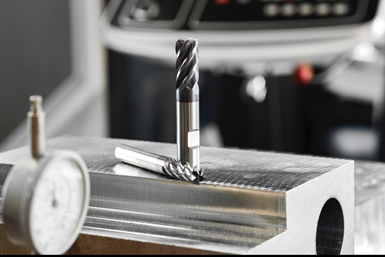Widia Introduces Solid End Mill for Shoulder and Side Milling
The WCE solid end milling series features a five-flute geometry specifically designed for optimal performance when shoulder milling and side milling carbon, stainless steel and cast iron.
Share





Widia has expanded the capabilities of its WCE solid end milling series with a five-flute geometry specifically designed for optimal performance when shoulder milling and side milling carbon, stainless steel and cast iron. The WCE5 solid end mill combines the unequal index feature with an elevated 38° helix.
The five-flute, square-end end mill with sharp edges, chamfers and corner radii joins a four-flute square-end and ball-nose end mill with both straight and Weldon shanks as part of Widia’s WCE solid end mill portfolio. The WCE4, a four-flute geometry solid end mill, combines the asymmetrical index and variable helix features for operations like full slots and heavy cuts.
“Our customers look to Widia for solutions that prolong tool life and get the job done,” Tamir Sherif, Widia’s solid end milling global portfolio manager, says. “With Widia’s WCE5, we’re giving them a tool that delivers reliable performance for side and shoulder milling, as well as helical and dynamic milling. It is the next-gen solution for versatility and expands on the overall performance and capabilities of Widia’s trusted WCE platform.”
Other benefits of Widia’s WCE solid end mill series include faceted and eccentric relief to provide vibration dampening; core taper to improve chip evacuation; and a universal grade (WU20PD) to perform in steel, stainless-steel and cast-iron materials.
Both the WCE4 and WCE5 solid end mill series are available in imperial and metric measurement systems.
Related Content
-
How to Accelerate Robotic Deburring & Automated Material Removal
Pairing automation with air-driven motors that push cutting tool speeds up to 65,000 RPM with no duty cycle can dramatically improve throughput and improve finishing.
-
Form Tapping Improves Tool Life, Costs
Moving from cut tapping to form tapping for a notable application cut tooling costs at Siemens Energy and increased tool life a hundredfold.
-
How to Mitigate Chatter to Boost Machining Rates
There are usually better solutions to chatter than just reducing the feed rate. Through vibration analysis, the chatter problem can be solved, enabling much higher metal removal rates, better quality and longer tool life.
























.png;maxWidth=300;quality=90)
